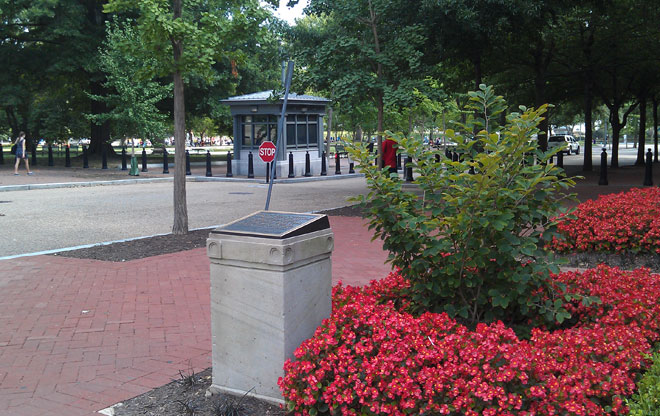
Kennedy Plaque
Jackie Kennedy’s dismay over the government’s plans to demolish the townhouses around Lafayette Square to build federal offices resulted in the President seeking the advice of architect John Carl Warnecke. The architect’s design preserved and respected the historic townhouses and the scale of the square, while accommodating new office buildings. This initiative highlighted the First Lady’s drive to establish preservation policy, which contributed to passage of the 1966 National Historic Preservation Act.
Image: Elizabeth Miller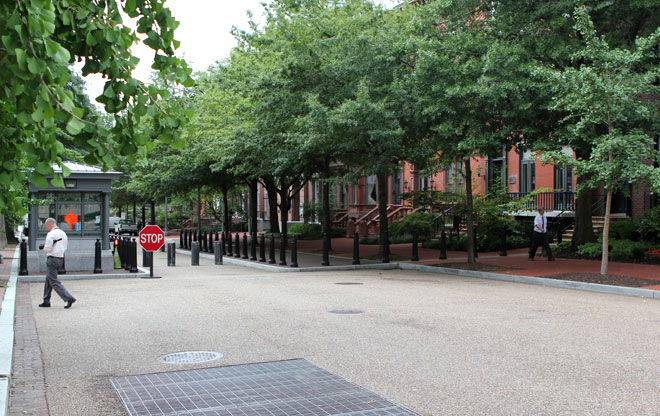
Security Perimeter and Checkpoint
The guard booths and bollards are security measures intended to protect the President's home and executive office. The shape, color, and placement of these features were carefully designed to respect the square’s park-like character.
Image: Elizabeth Miller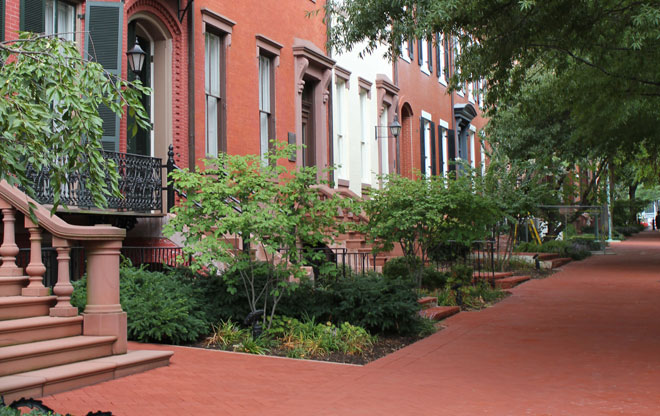
Jackson Place
Along Jackson Place, the preserved 19th-century Federal and Italianate townhouses are framed by the majestic tree-lined streets that embrace the park, creating a comfortable scale and a memorable walk rich in details. Visitors can stop in the White House Visitor Center or the Decatur House to learn more about the area’s history. It’s comforting that the square has stood the test of time and it's fun to imagine the Presidents and their wives strolling about the square.
Image: Michael Limburg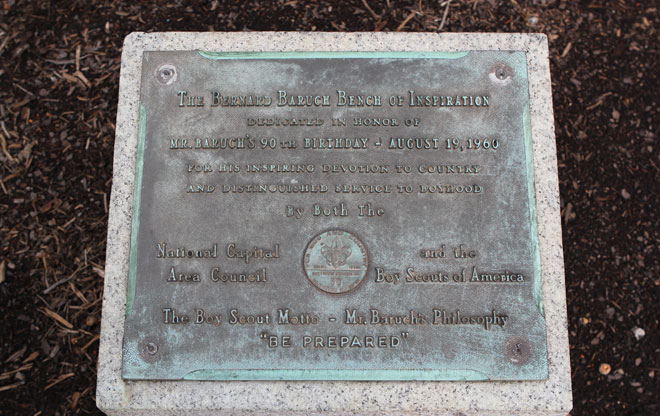
Baruch's Bench
Dubbed "the Park Bench Statesman”, Bernard Baruch was a Wall Street executive. He served as an economic advisor and confidante to six Presidents between World Wars I and II. The story goes that rather than driving to the White House, he preferred to sit on a bench and wait for a signal indicating that the president was ready to meet. It is said that once he received a letter addressed simply, "Bernard Baruch, Lafayette Park, Washington, D.C.”
Image: Michael Limburg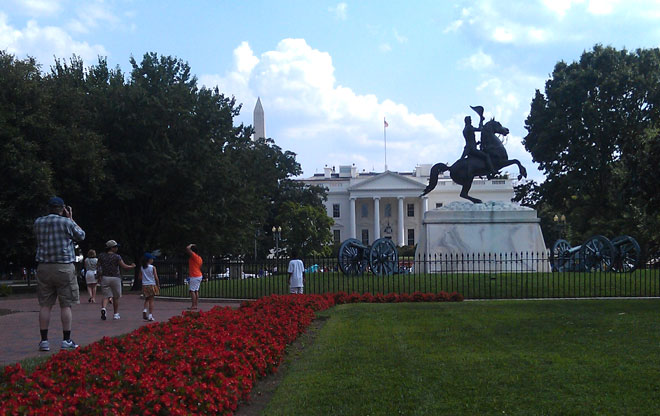
Axial View of Jackson to the Washington Monument
I like the relationship between these American icons because they orient us to our history and to our future, evoking an emotion unique to each observer: In the foreground, the dynamic silhouette of President Andrew Jackson anchors the country's remarkable past, in the mid-ground is the prominence of the White House where our future is charted, and the permancence and stability of the Washington Monument punctuates the background. It’s no wonder they are photographed so often!
Image: Elizabeth Miller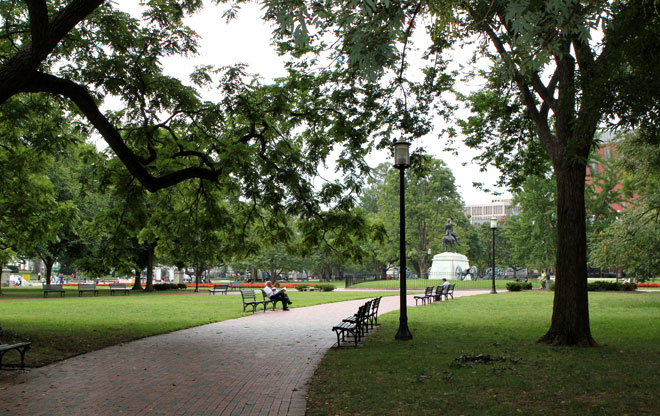
Park Path
Locals and visitors come to Lafayette Square to relax, read, and enjoy the park and fresh air. In the midst of a busy day, it’s refreshing to watch the squirrels dash about, folks playing a chess game, and visitors making their way to the White House to take pictures or maybe catch a glimpse of the President and the activity inside.
Image: Elizabeth Miller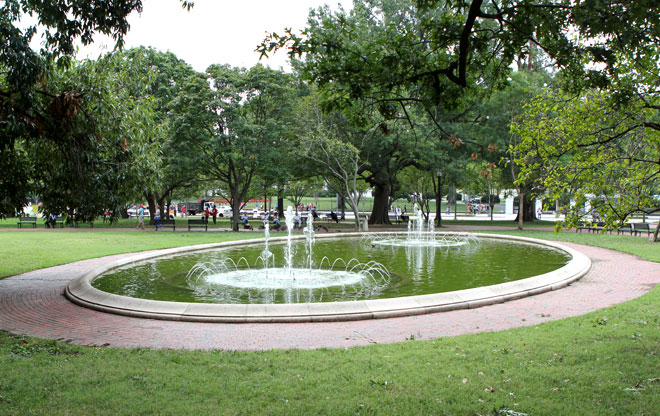
Park Features
Although the fountain hints of a modern era, Lafayette Square’s picturesque walkways, tree canopy, flowerbeds, and public art reveal the park's 19th century influences and a deep and rich history.
Image: Elizabeth Miller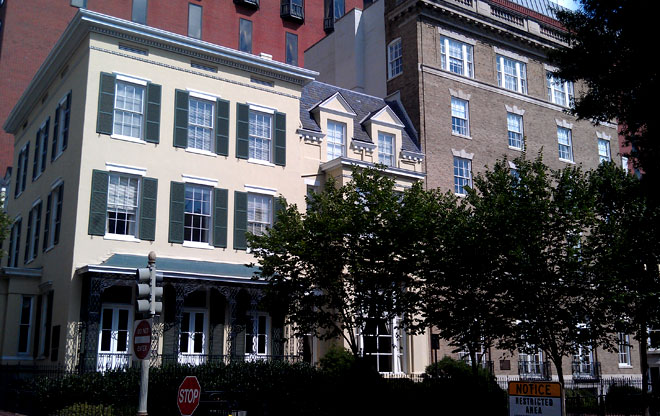
Madison Place
The 1820, federalist-style Dolly Madison house sits at the corner of Madison Place next door to the Veteran’s Administration builing. The contrast is a reminder of what Lafayette Square would look like without Jacqueline Kennedy’s efforts to preserve the square's 19th century character.
Image: Elizabeth Miller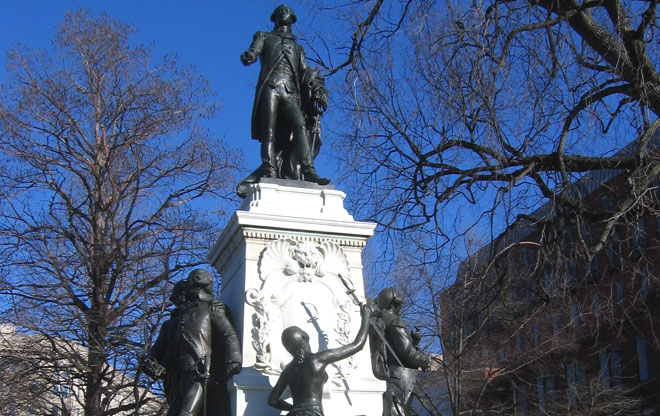
Revolutionary Statues
Statues dedicated to a Revolutionary War hero stand at each corner, punctuating and defining the park's boundaries. These patriots helped the colonies establish their independence from the British Empire. My favorite is Marquis de Lafayette who arrived to America as a wealthy nineteen-year-old nobleman. His contributions to the war effort eventually helped cause the British to surrender. He was also first foreign dignitary to stay at the White House and to address Congress.
Image: Elizabeth Miller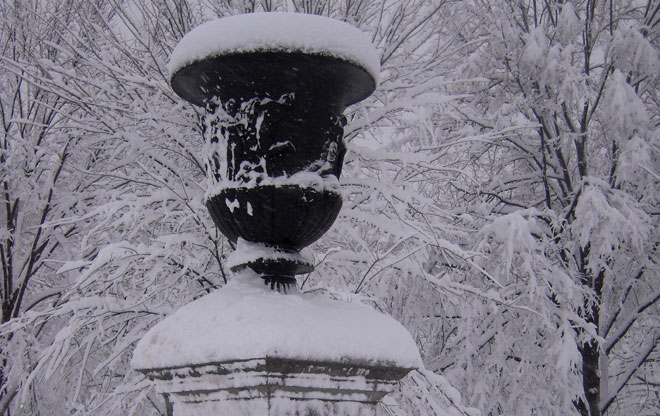
Navy Yard Urn
Andrew Downing’s 1852 Park plan envisioned ornamental elements in the landscape. In 1872, the Secretary of the Navy commissioned these bronze urns. Designed with a Renaissance motif, the urns were cast from melted Civil War cannons. Their placement strengthens the parks symmetry and character.
Image: Elizabeth Miller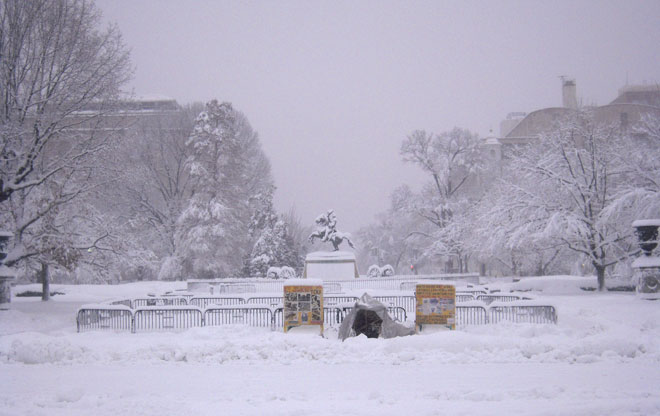
The Vigil for Peace
While the character and activity along the avenue has evolved, the vigil for peace remains constant. For more than 30 years, every day, all day, a small group has maintained a mostly quiet protest to rid the world of nuclear weapons. Evoking their democratic freedom, their resolve is to peacefully educate and bring awareness to the millions of American’s and international visitors that visit the area each year.
Image: Elizabeth Miller